History
1861
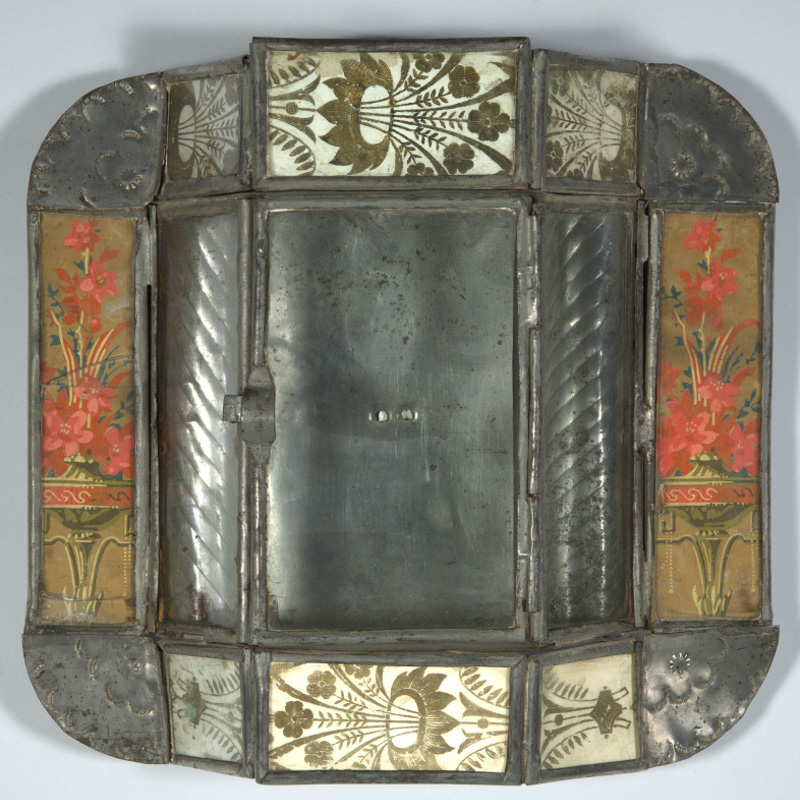
Nicho, Santa Fe Federal, c. 1865, Tin and mixed media, 10 7/8 x 11 1/4 x 2 3/8 in., Harwood Museum Collection. Gift of Elizabeth Compton Hegemann
Captain Smith H. Simpson acquires buildings on Ledoux Street. Also in 1861, American Civil War Confederate sympathizers repeatedly tore down the U.S. flag in Taos Plaza. Simpson and others nailed the flag to a pole and guarded it 24 hours a day to ensure the flag remained in place. To commemorate the event, the United States Congress permits Taos to fly the flag over Taos Plaza twenty-four hours a day.
1915
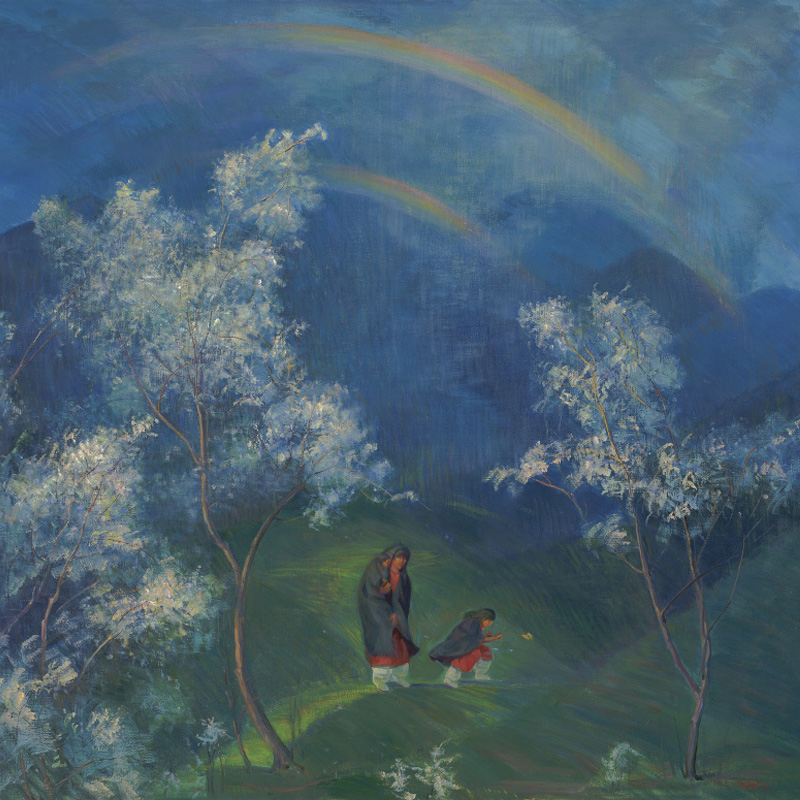
Bert G. Phillips, The Passing Snow Squall; Taos Mountain, c. 1915, Oil painting, 40 3/16 x 41 5/8 in. Harwood Museum Collection. Gift of Mrs. Floyd Bentler & Ralph J. Phillips
The Taos Society of Artists is formed. Bert Phillips, Ernest Blumenschein, Joseph Sharp, Irving Couse, Herbert Dunton, and Oscar Berninghaus, created the first professional artists’ association in the southwest, and established Taos as the art colony it is today.
1916
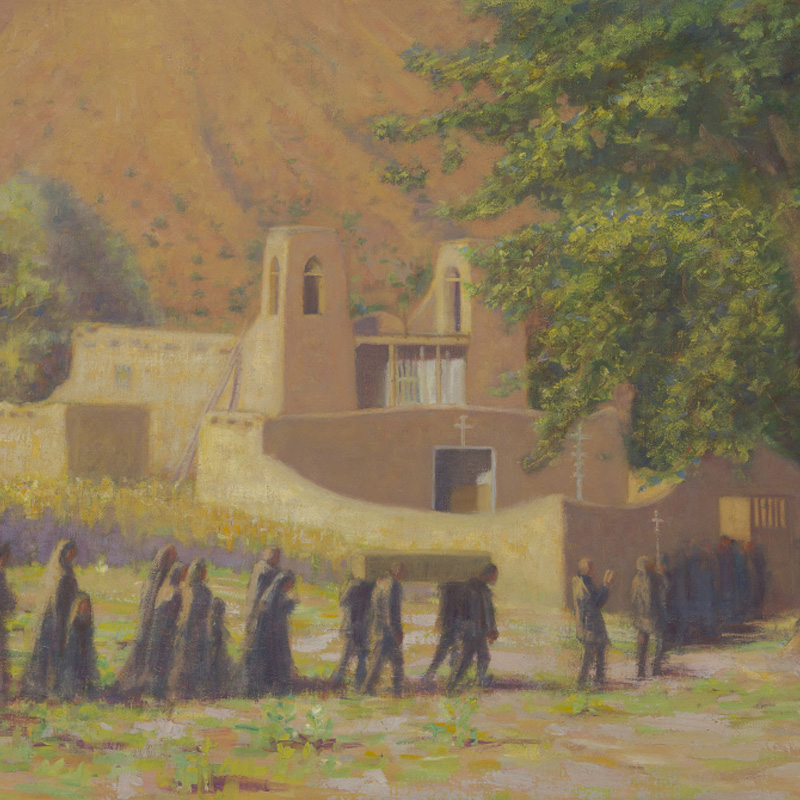
Burt Harwood, Church Procession, Chimayo, 1916, Oil painting, 22 1/16 x 26 3/16 in., Harwood Museum Collection. Gift of Lucy Case Harwood
After 20 years of living in Paris and Brittany, Burt and Lucy Harwood move from France to Taos likely on the advice of Ernest L. Blumenschein. On December 6, the Harwood’s purchase the Ledoux Street property, known as El Pueblito, for $1,200.00 from the family of Smith H. Simpson.
1922
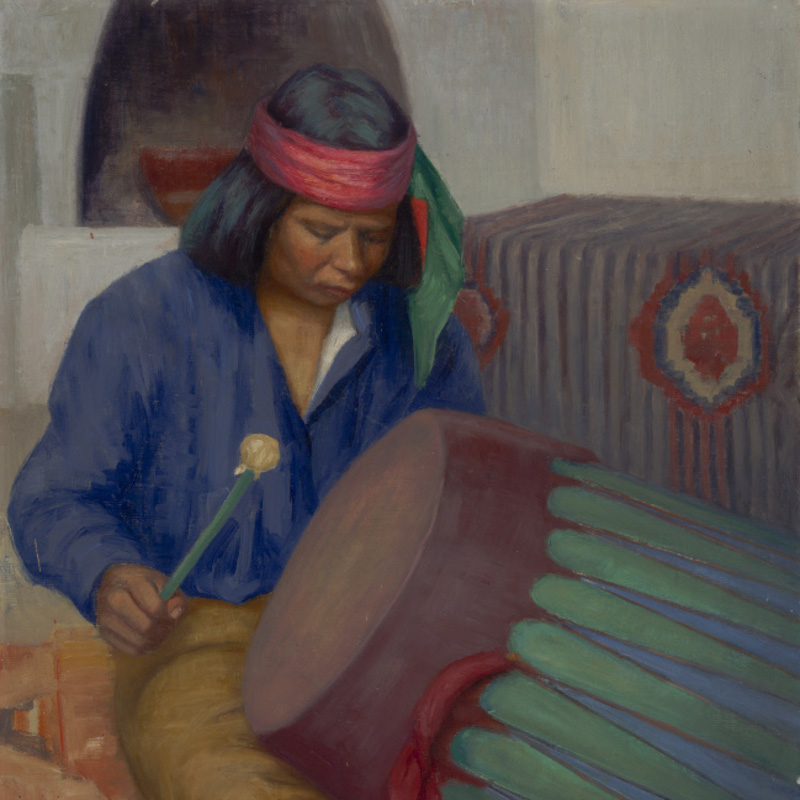
Burt Harwood, Taos Indian Beating Drum (Cochiti Drummer), 1922, Oil on canvas board, 29 15/16 x 25 in., Harwood Museum Collection. Gift of Lucy Case Harwood
Burt Harwood dies. His headstone epitaph reads:
Remember me as you pass by. As you are now, so once was I. As I am now, you soon will be. Prepare for death, and think of me.
1923
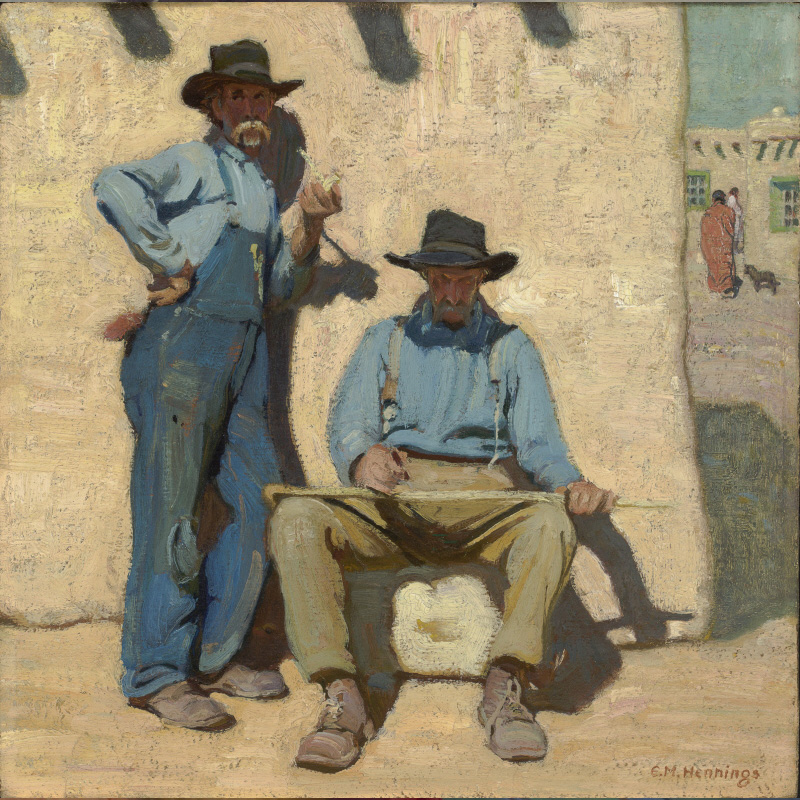
E. Martin Hennings, Baumgarten Twins, 1923, Oil on board, 14 3/16 x 14 3/16 in., Harwood Museum Collection. Gift of William & Elizabeth Temple
Lucy Harwood forms the Harwood Foundation with a group including Taos Society of Artists members Victor Higgins and Bert Phillips. The Articles of Incorporation were registered with the State Corporation Commission on December 7, making it the second oldest art museum in the state.
1924

E. Martin Hennings, Untitled (horse and colt by stream), c. 1924, Lithograph, 16 1/4 x 15 7/8 in., Harwood Museum Collection. Gift of the Museum of New Mexico, Museum of Fine Arts
The Harwood Foundation hosts its first art exhibition, ten years before the Town of Taos was incorporated.
1926
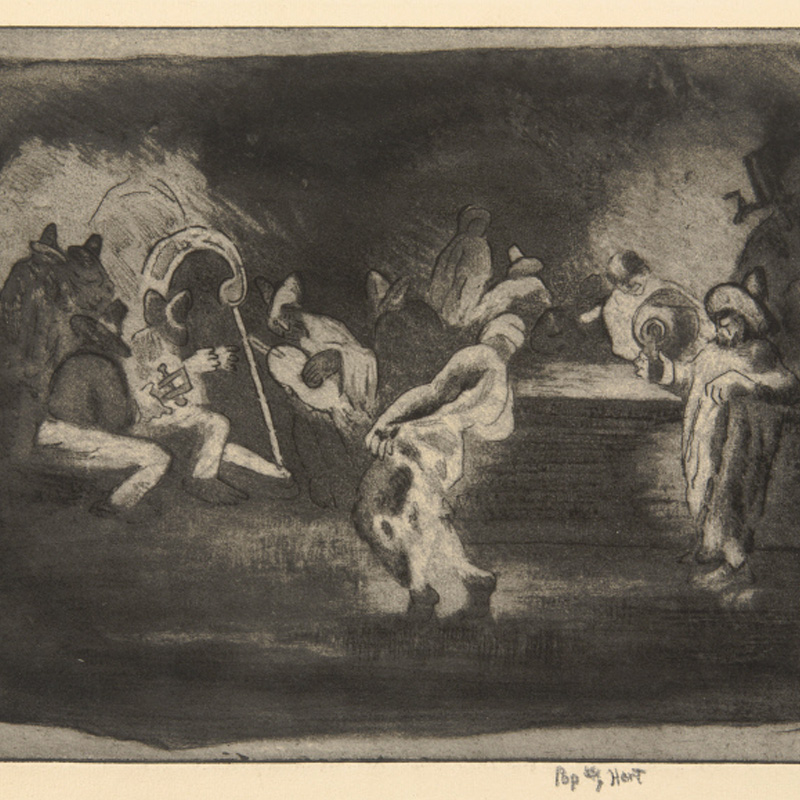
George Overbury Hart, Dias de Fiesta (Plate No. 1), 1926, Etching, image: 7 5/8 x 10 7/8 in. Harwood Museum Collection. Gift of C. William and Eleanor Reiquam
The town’s library is established at the Harwood Foundation. Lucy made the Harwood’s’ private collection of books available to the community, which she loaned from the front porch while serving iced tea. Mabel Dodge Luhan donated books from her own collection, along with others who contributed funds and inspired support.
1929

Louis Ribak, Untitled Women (verso Self Portrait), 1929, Oil on board, Overall: 26 x 15 1/2 in., Harwood Museum Collection. Gift of the Mandelman-Ribak Foundation
The University of New Mexico opens the Art Field School at the Harwood Foundation, a program which continued for twenty-six years and was attended by many artists including Agnes Martin.
1935

Howard Cook, Uncle Happy, 1935, Wood engraving, image: 9 × 8 3/4 in., Harwood Museum Collection. Gift of C. William and Eleanor Reiquam
The Harwood Foundation becomes part of the University of New Mexico through a gift from Lucy Harwood. The Deed of Conveyance dated November 8, 1935, states that the property will be an educational, cultural, and art center in connection with the University. Lucy Harwood continues to live on the property.
1938
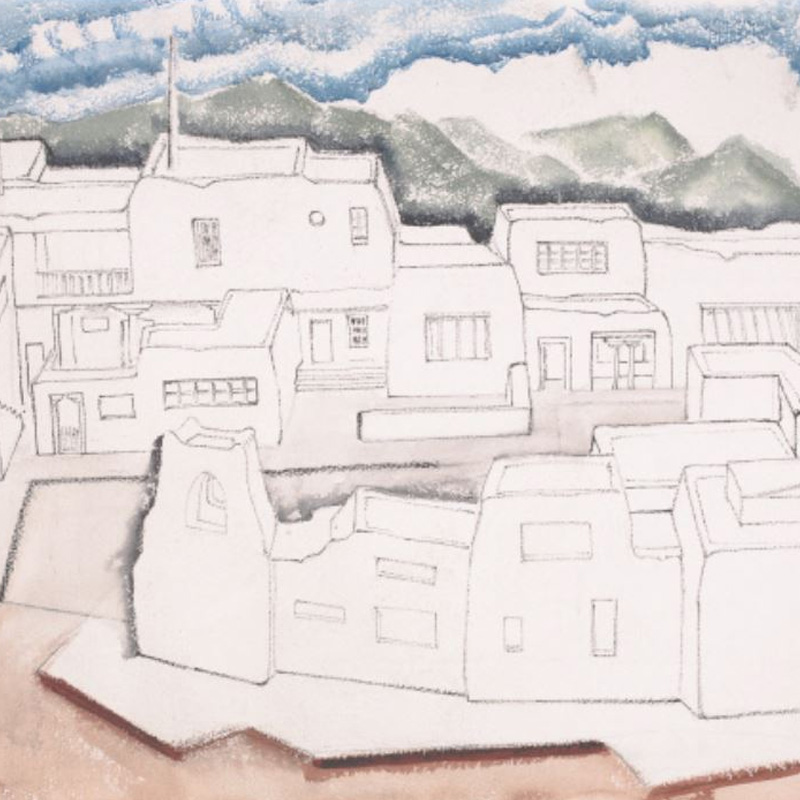
Victor Higgins, Untitled (Harwood House), c. 1937, Watercolor on paper, 21 5/8 x 30 1/8 in., Harwood Museum Collection. Gift of the Artist
Lucy Harwood dies on December 11. “A nest, a safe place, a sweet refuge…”were the words author John Nichols used to describe the Harwood Museum of Art, and also seem to capture Lucy Harwood’s benevolent nature.
1946
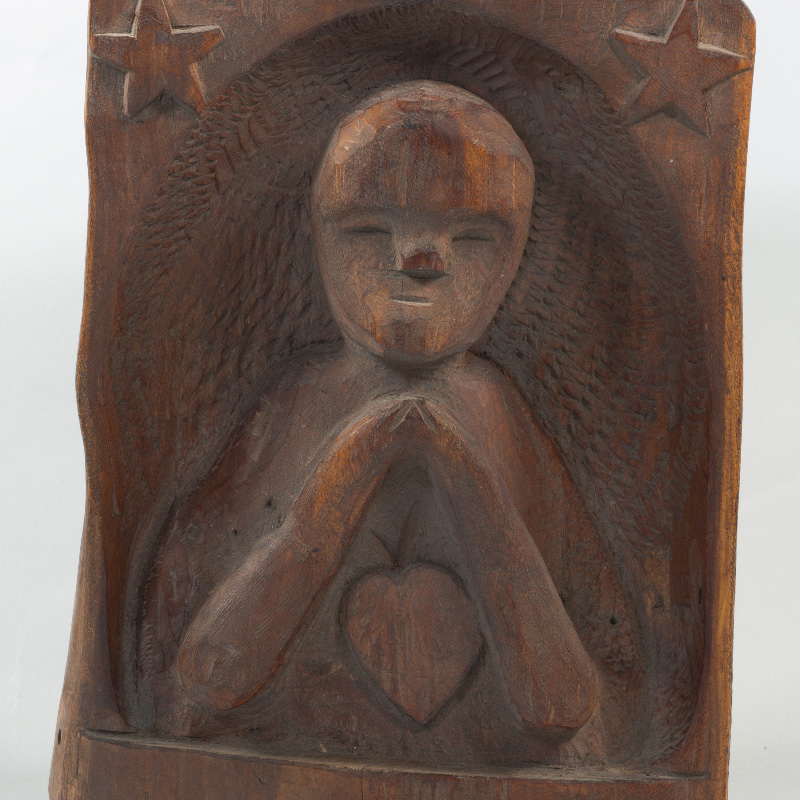
Patrociño Barela, Untitled Bulto, c.1940, Wood, 9 7/16 x 7 5/16 in., Harwood Museum Collection. Courtesy of WPA
The Taos County Project was initiated through the Carnegie Foundation, which brought a bookmobile which was active into the 1950s and operated out of the Harwood.
1976
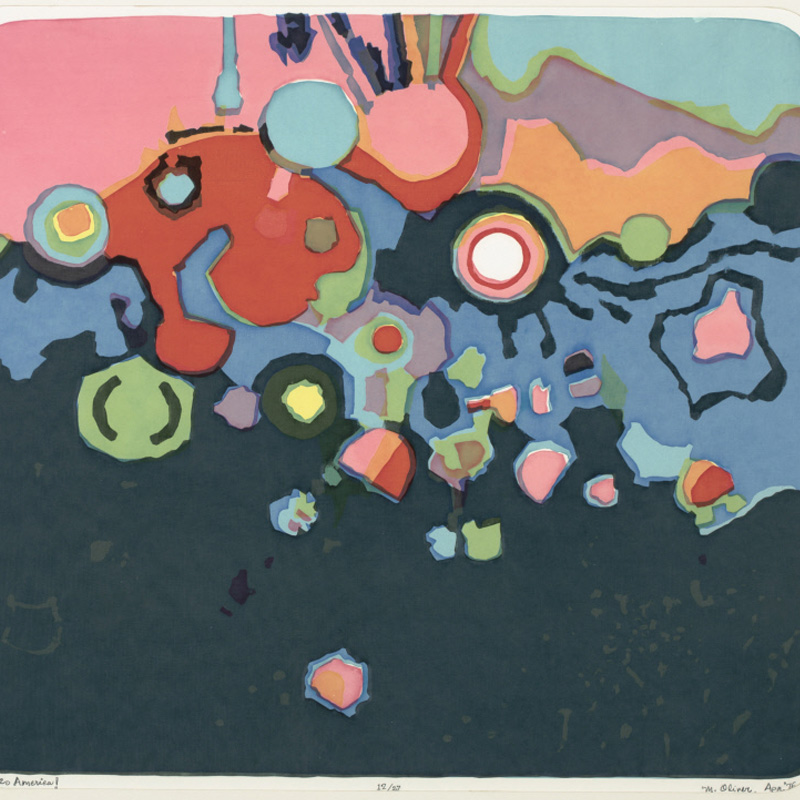
Marcia Oliver, Celebrate America!, 1976, Serigraph, 23 1/16 x 25 9/16 in., Harwood Museum Collection. Gift of Jane Lipman
The Harwood was added to the National Register of Historic Places, the United States federal government’s official list of places deemed worthy of preservation for their historical significance.
1984

Jim Wagner, Tony Doesn’t Like The Blankets I Buy Him, 1984, Oil on canvas, 35 15/16 x 35 15/16 in., Harwood Museum Collection. Gift of Philip Bareiss
The library housed at the Harwood Foundation comes under the jurisdiction of the Town of Taos. In 1996, the library moved to its current location on Camino de la Placita. The Town of Taos contributed property and refinanced existing bonds to create major funds for the library. The Friends of the Harwood raised an additional $300,000.
1997
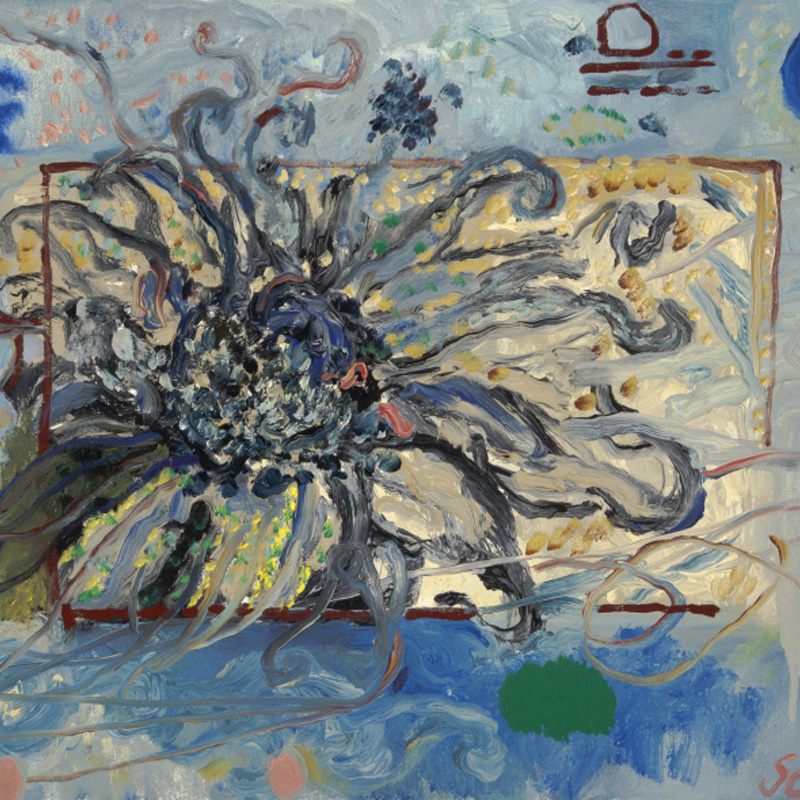
Sam Scott, Sunflower in Moonlight, 1997, Oil on linen, 18 x 24 in., Harwood Museum Collection. Anonymous Gift
The Harwood Museum of Art was formed. A major renovation and expansion project transforms 11,000 square feet of the building into seven new galleries, including the internationally renowned Agnes Martin Gallery.
2010
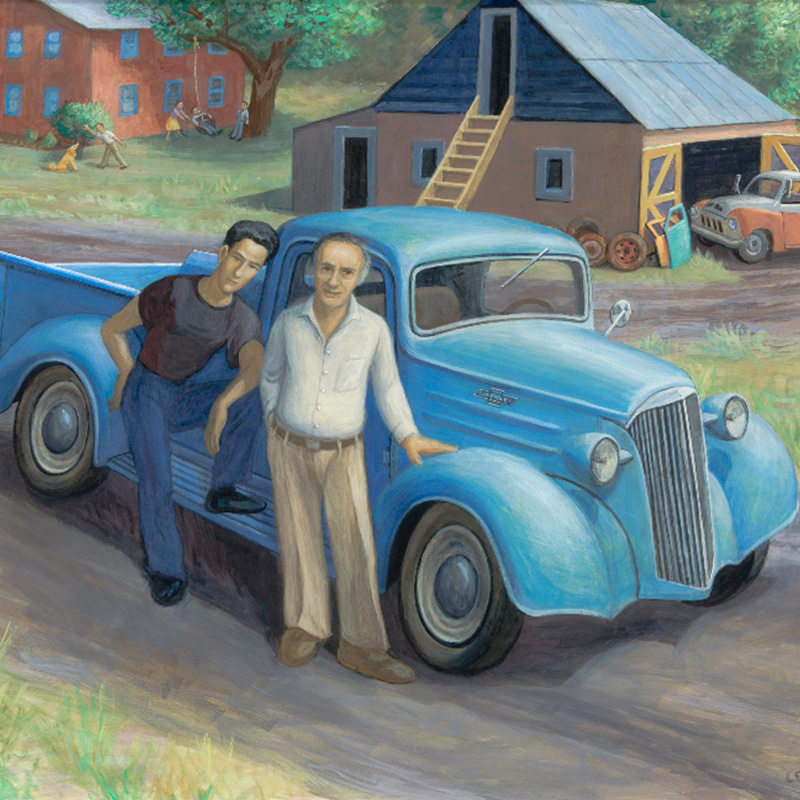
Eli Levin, Portrait of Arthur Bell, Sr. and Arthur Bell, Jr., 2010, Egg tempera, 28 3/4 x 34 3/4 in., Harwood Museum Collection. Gift of Robert Bell
Another major project adds a three-level, 11,000 square-foot wing. The $6.3 million expansion adds the Mandelman-Ribak Gallery, the Arthur Bell Auditorium, new collection and archive storage, a collection work-study room, and a loading and receiving area for works of art.
